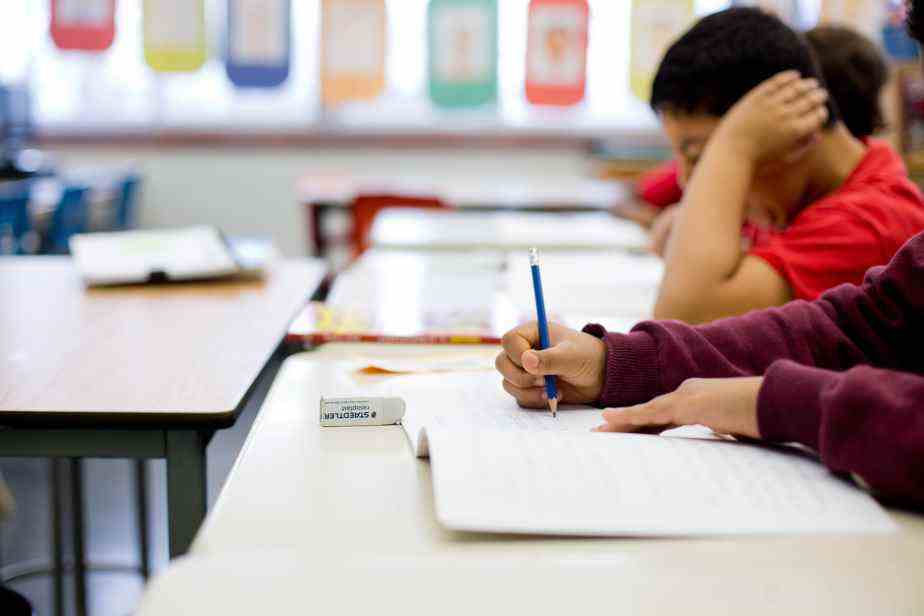Primary school student failure rates have not been affected by the pandemic and frequent school closures, a report produced by the Ministry of Education and obtained by The Press.
We know that the pandemic has increased the graduation rate among high school students, but their results have decreased in the last ministerial exams. However, little attention has been paid to the youngest who have also suffered the multiple upheavals of the pandemic.
A Ministry of Education report obtained through an Access to Information request notes that as of February 2022, in the midst of the Omicron wave, “failure rates remained stable, not differing before or during the pandemic”, in 3e year and in 6e primary year.
To reach this conclusion, the Ministry of Education compared student success rates before, during and after the pandemic, the report notes. Data was collected in February and June 2021, as well as February 2022, and compared to student report cards before the pandemic.
In students of 6e year, for example, the mathematics failure rate, which was 7.5% in February 2020 (just before the start of the COVID-19 epidemic) had returned to the same rate in February 2022.

Among these same students, the failure rate in writing was a little higher in February 2022, at 7.4%, a difference of just under a percentage point from what it was two years ago. earlier.

As the ministry’s exams were canceled during the pandemic, “we can’t conclude that it’s stable,” says Mélanie Paré, professor at the Faculty of Education at the University of Montreal.
To reach this conclusion, Quebec relies on “notes in the bulletin, which contain the evaluations that have been made by the teachers”, explains Ms.me Ready.
To see that the rates are fairly stable, it shows that teachers are adjusting to the context of the pandemic, more than it attests to the skills of the students.
Mélanie Paré, professor at the Faculty of Education at the University of Montreal
For this second year of the pandemic, Quebec had also reduced the number of bulletins from three to two per year, and that of February was the first of the school year.
Wider gaps between students
These data do not say everything, adds Mélanie Paré. “What the teachers tell me is that there is an accentuation of the gaps [entre les élèves les plus faibles et les plus forts] and that, you won’t see in the averages,” says the professor from the University of Montreal.
If the Ministry had focused on the success rates between students from disadvantaged backgrounds and those from privileged backgrounds, we would see greater differences than before the pandemic, continues Mélanie Paré.
“The effect on academic performance and school attendance is much greater in disadvantaged settings as a result of the pandemic. These are students who are more affected, ”says Mme Paré, who also cites those with learning difficulties or disabilities.
The document A look at the potential academic delay of students during a pandemic brings these same nuances.
It reads that “the level of interruption of educational services as well as student support services during the pandemic period were not considered in the analyzes even though they could be important factors in the variation of student success”.
Schools in Quebec were not closed for the same length of time during the pandemic, with some in the red zone remaining in distance learning longer, particularly in the Montreal region.
For 2021-2022, Ministry of Education data was collected from 306 schools, public and private, across the province.
With the collaboration of William Leclerc, The Press
